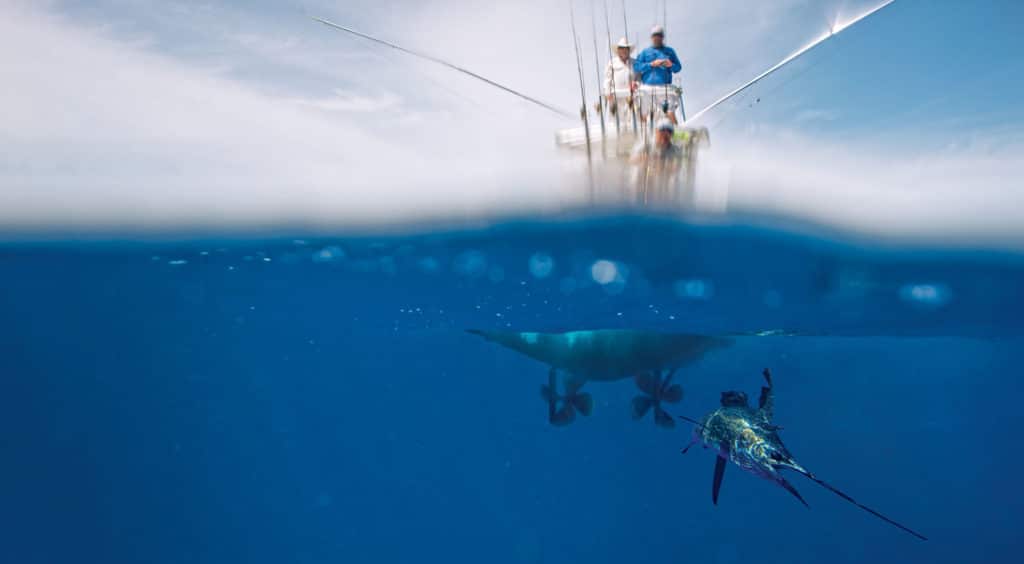
It had been one of those days, but in an excellent kind of way. We had three live goggle-eyes splashing right on top beneath a kite, plus four more liveys—two swimming near the surface and a pair in the depths—and we would have been in deep trouble had we bet heavily on the kite baits.
That particular day off Miami, Carl Grassi and I went 5 for 7 on sailfish, with the deep lines accounting for four of these fish. A surface flat line produced one fish, while the kite lines went undisturbed.
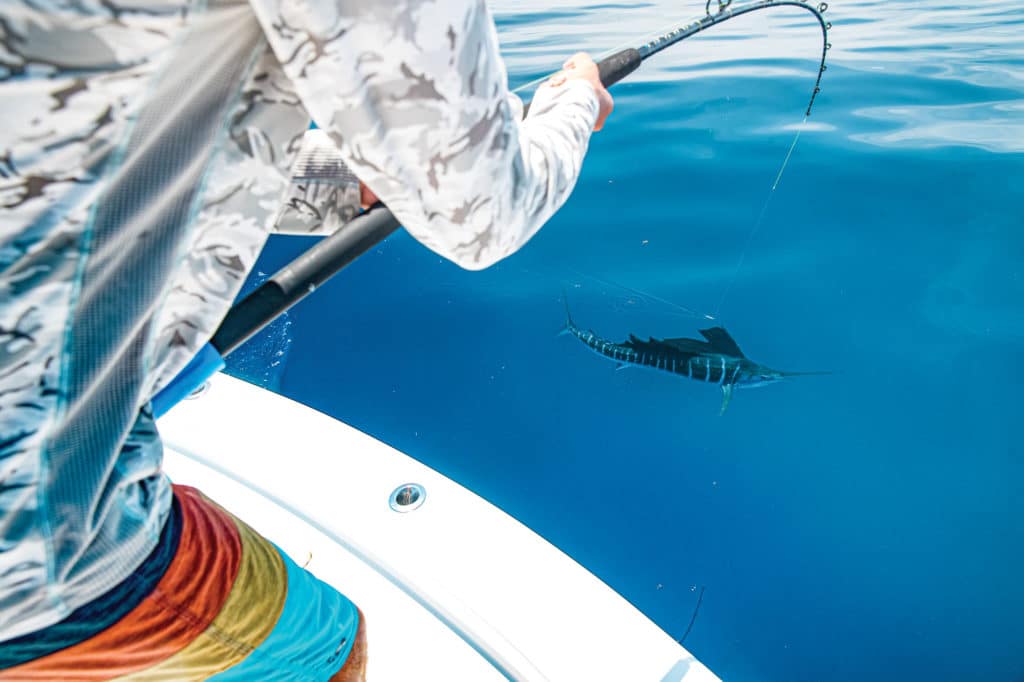
Surface Visions
While sailfishing is usually a visual game, what you don’t see just might make a day, especially a slick-calm one.
Concentrating exclusively on the surface limits your potential. To ensure success either drifting or slow-trolling, add at least one deep bait to the mix.
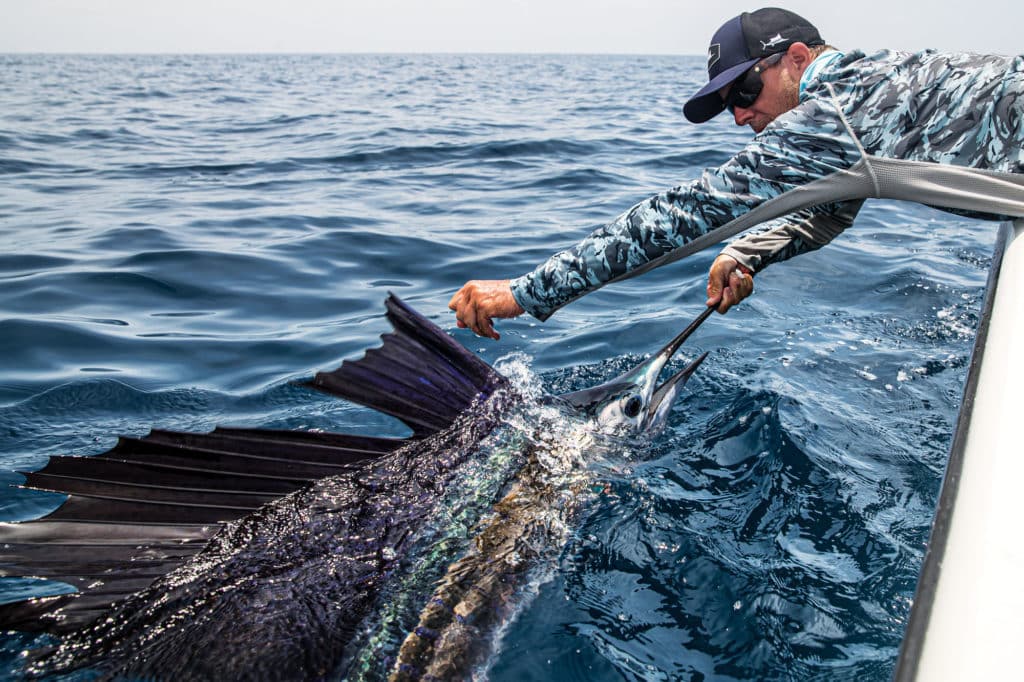
Deep Dividends
When live-baiting for sailfish, we set a pair of deep baits down, approximately 20 and 50 feet, with the rods positioned at opposite ends of the gunwale to keep the lines apart.
Baits staggered in the water column often prevail when the forage remains deep, if there’s a favorable temperature gradient, or when sailfish are simply off their feed or migrating well beneath the surface.
As a bonus, the weight of a sinker keeps the line taut to the fish, especially important wherever a fish takes to the air.
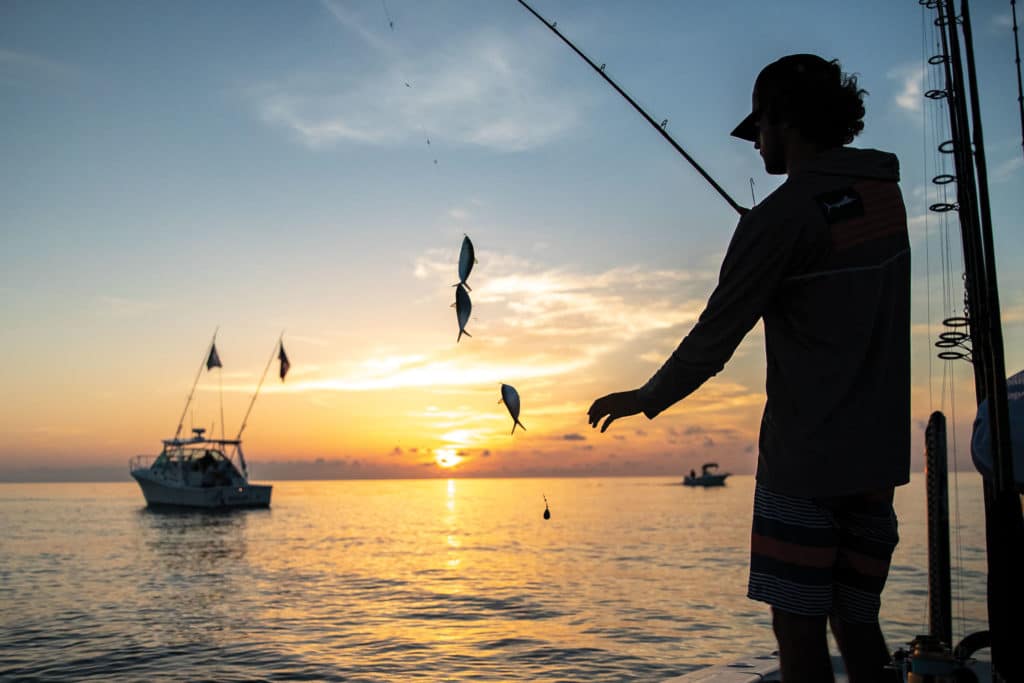
With larger baits—goggle-eyes and blue runners—we commonly use 8- or 10-ounce weights. With a brisk drift, we’ll sometimes upgrade to 16 ounces; while this may seem excessive, they’ll hold the baits in place with less line planing from the drift. Furthermore, the tension on the line from the weight helps set and hold the hook in place.
Our deep window often expands on slow days, when we’ll drift out into 300- and 400-foot depths, especially around wrecks. We set one bait 100 feet down, and a second at 200 feet. Monitoring our fish finder helps determine depth adjustments; if we mark bait or fish activity or a thermocline, we’ll position a bait there.
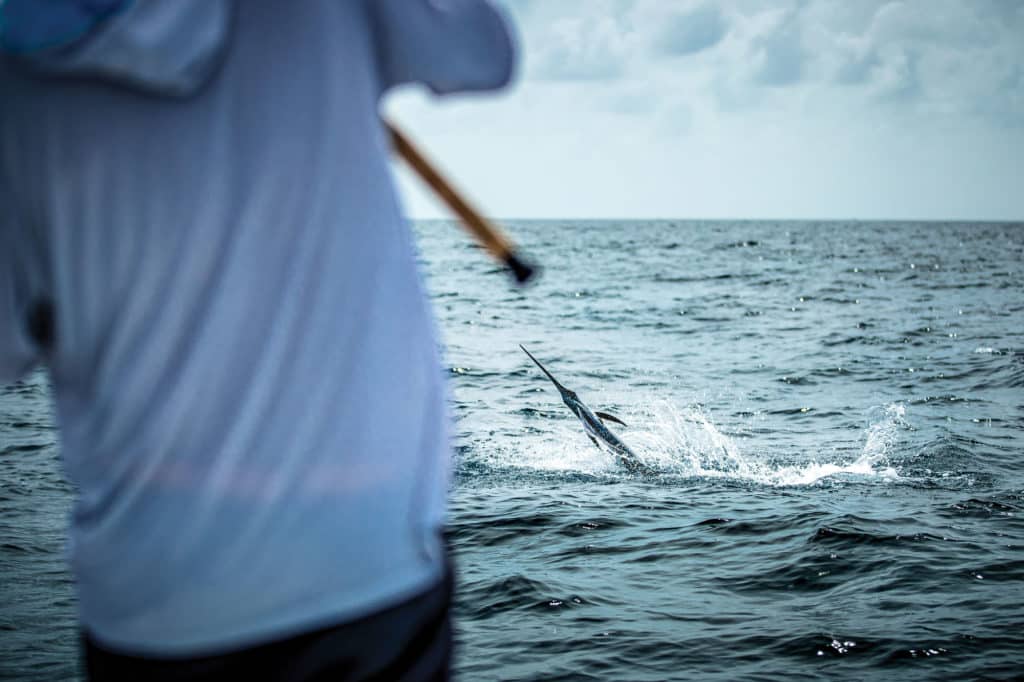
Double Down
Key West Capt. Brice Barr, an accomplished sailfish tournament angler and live-baiting specialist, does a lot of slow-trolling with kites on his 39-foot charter boat, Double Down, yet frequently keeps one deep bait in play. “We’re slow-trolling between 1 and 3 knots, depending on the current,” Barr says. “Based on that current, the weight we use varies from 3/4 ounce in windy conditions to a simple split shot when it’s calm; our baits are mostly live pilchards, threadfin herring and ballyhoo. With speedos, we’ll bump up to a 4-ounce weight or heavier. Our deep zone is within 20 feet of the surface.”
Barr uses rubber-core sinkers, placing one close to where the 15-foot, 30- or 40-pound fluoro leader joins the double line. “This serves as a visual mark for the person about to leader a fish,” Barr says. “We use spin tackle, and fish with the bail open and the line held by soft wire.
“We also prospect with a deep bait. We’ll pay out half the spool down the center of the spread, then retrieve the bait and repeat. Many times, that live bait gets eaten on the drop. We get a lot of kings this way, but we also catch sailfish. They all live together.”
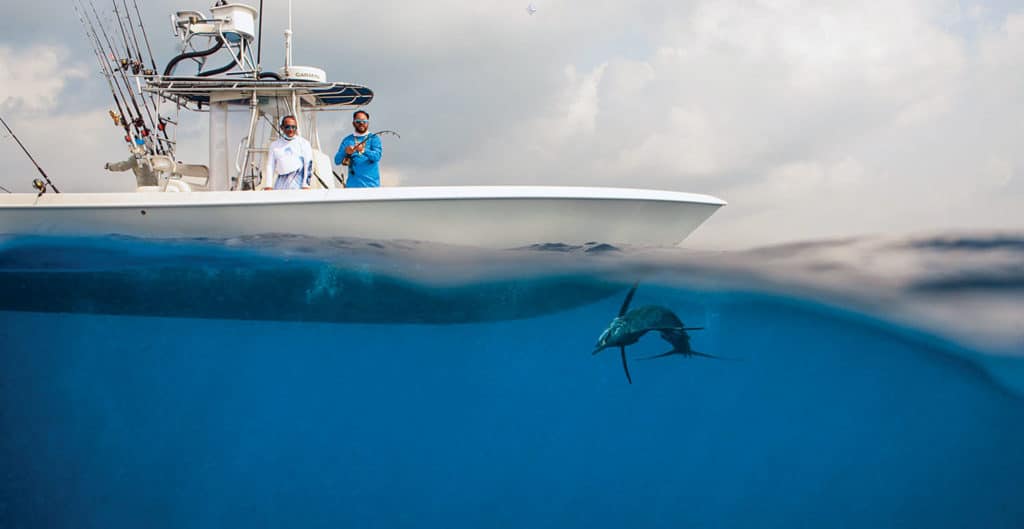
Variations of a Theme
Our hanging weight for deep-drifting is based on either an 8- or 10-ounce egg sinker rigged to a foot or so of 12-pound mono with a small snap swivel on the end. The catch or lock part of the snap is clipped off. Using mostly Penn Fathom 25NLD and 30 conventional reels, a short Bimini twist (double line) is tied in the 20-pound mono fishing line. A Bristol knot then joins 40 feet of 40-pound fluoro leader to the double line. A circle hook finishes the rig.
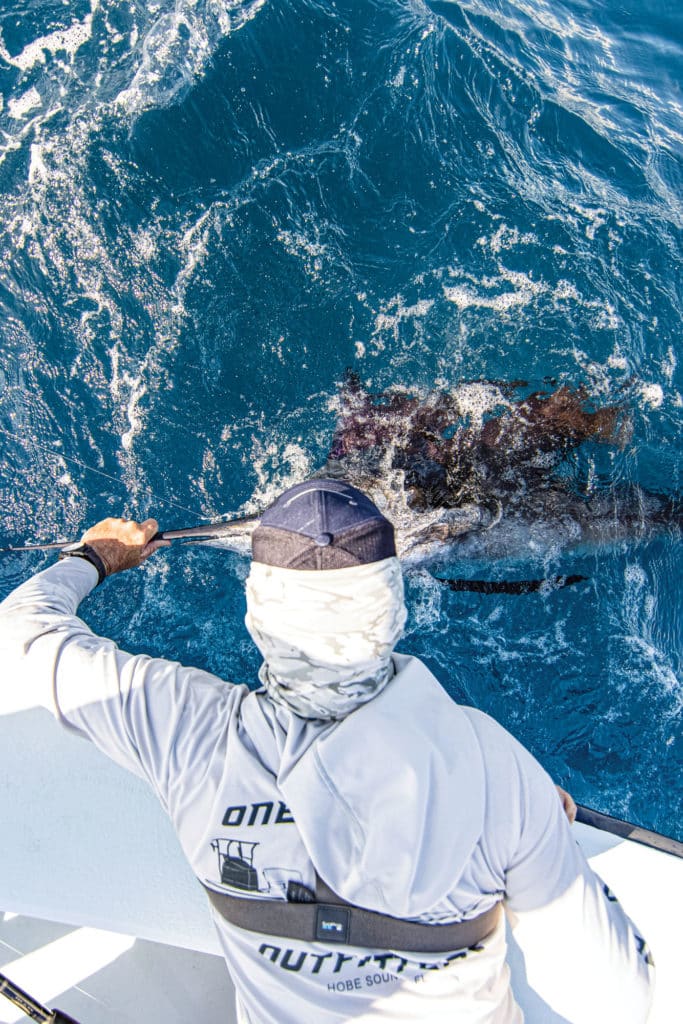
After deploying a bait some 40 feet back, we hang the weight from the double line and leave the snap open. The deep baits are set with a light drag or fighting drag, and rods placed in holders. When a hooked fish is within 40 feet of the boat, we remove the snap swivel and weight from the line, leaving the angler free to wind in the fish.
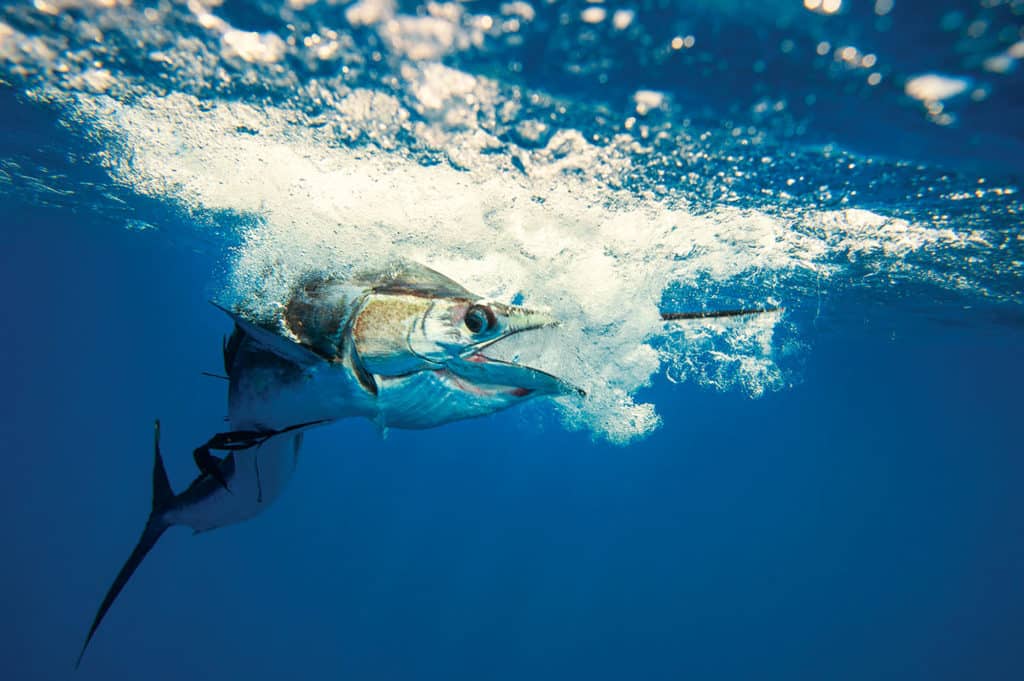
Gagliardini Variation
Capt. Jimmy Gagliardini, from Marathon in the Florida Keys, takes this rig one step beyond. Rather than hang the weight on the Bimini twist, he fastens a large split shot on the fishing line above the leader and hangs the snap swivel above it. This eliminates abrasion on the Bimini twist. As a fish runs, the swivel/sinker slides up the fishing line and away from the fish. As the fish is played up, the rig slides back against the split shot. When the sinker comes within reach, both the sinker and split shot are quickly removed.
Bouncer’s Breakaway
For decades, Capt. Bouncer Smith used breakaway sinkers on deep baits. He simply doubles a few inches of line, about 30 feet above the bait, passes the loop through an egg sinker, then puts a piece of a No. 64 rubber band through the loop and pulls the line until it snugs inside the egg sinker. He uses only a couple of ounces when it’s calm, and an 8-ounce sinker in breezy conditions.
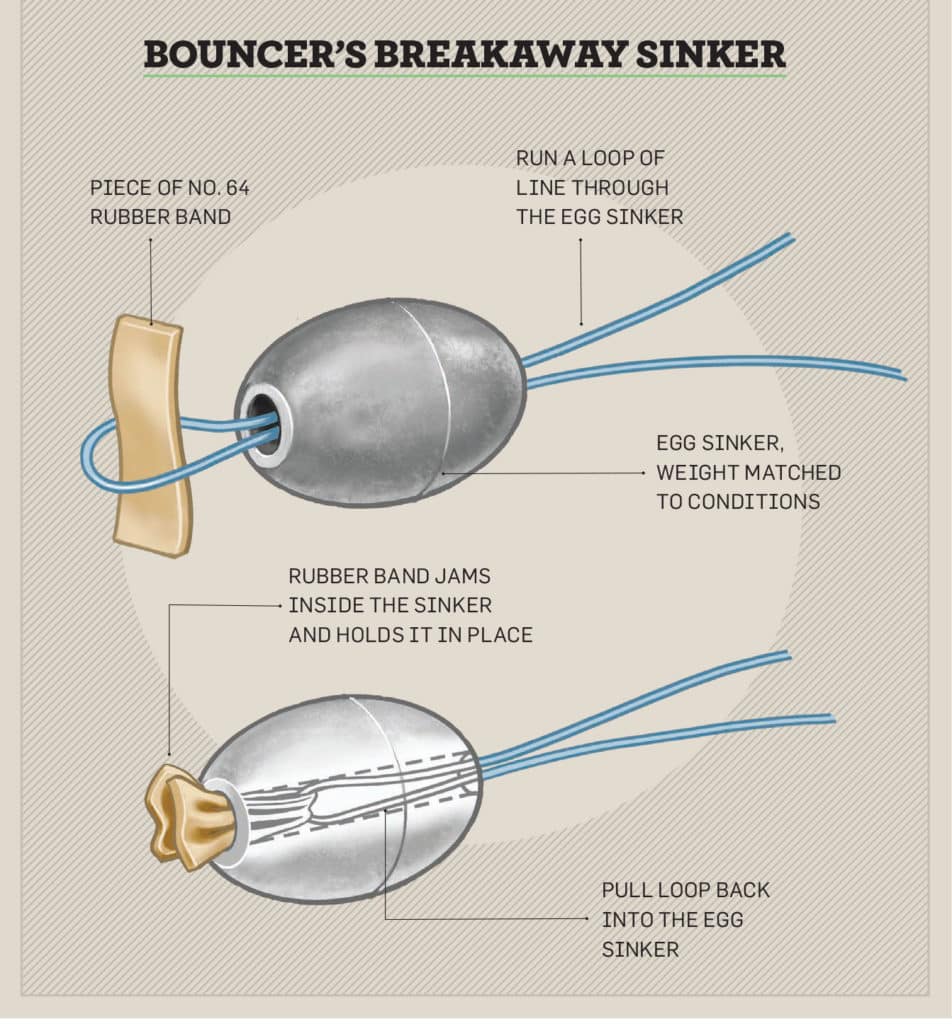
“One big tip when fishing deep is to locate the thermocline on your sonar,” Smith says. “That’s where you should position a deep bait, right at the break. Another way to find that break is by watching your deep line. If the line remains straight up and down, lower it some more. When the line begins sweeping along, that’s the current break. Position the bait there.”
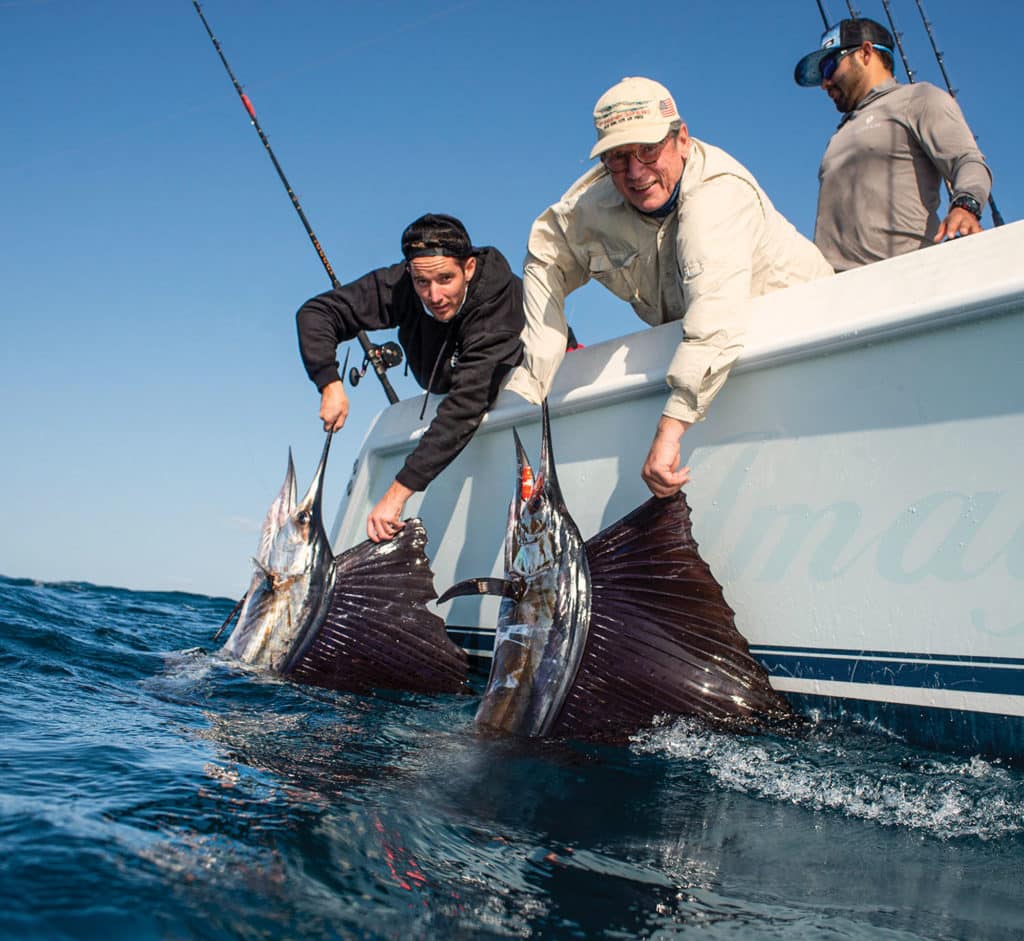
Deep Troll
On calm days, Smith favors slow-trolling a deep bait in downrigger fashion. He uses a Hooker Electric reel, with its braided line attached to a snap swivel. This snap swivel is then connected to a short length of 100-pound mono carrying a Black’s release clip, then a second snap swivel attached to a 10-pound downrigger ball.
Read Next: Where to Find Sailfish
“It’s imperative to slow-troll a live bait and not drift when using a downrigger, as a live bait can swim back around the terminal gear when drifting,” he says. “I’ll set the downrigger ball at 60 feet. Slow-trolling a live ballyhoo that deep is deadly on sailfish.”
As for anglers missing the boat by not deploying a deep bait for sailfish, Smith sums it up:
“If you’re not fishing a deep bait for sails, you’re going to miss out. When they’re eating deep, chances are good that a hooked sailfish will bring up followers, and those followers will jump on the surface baits. I’ve experienced many sensational fishing days with this very scenario.”









